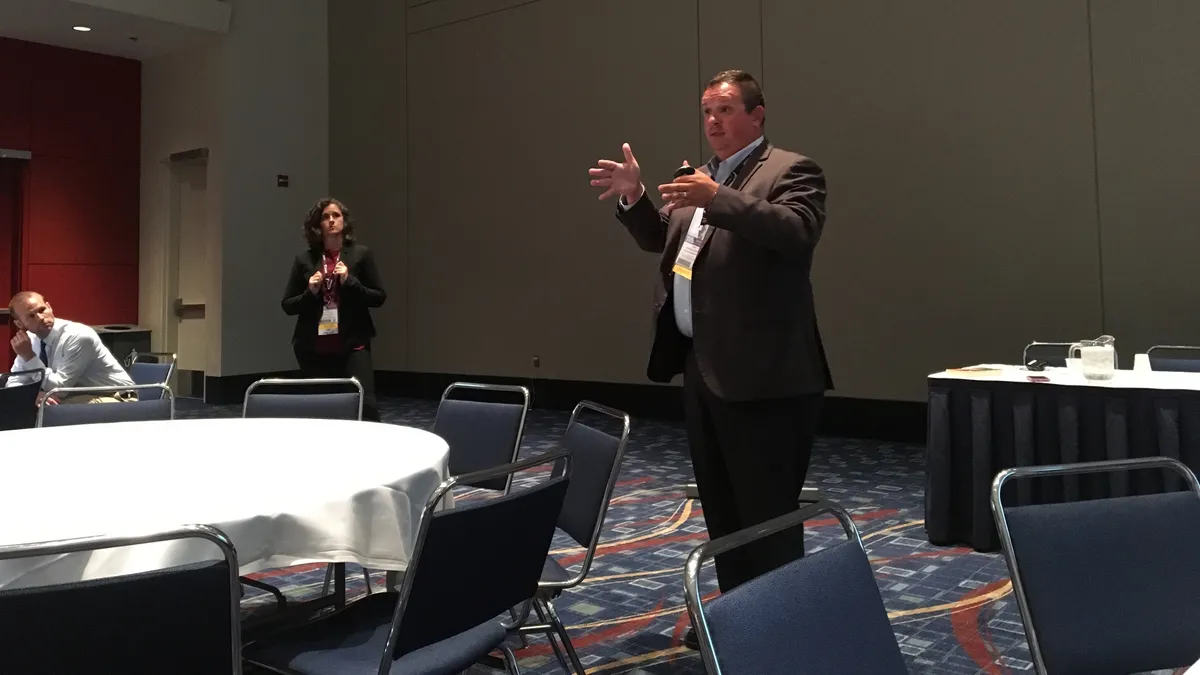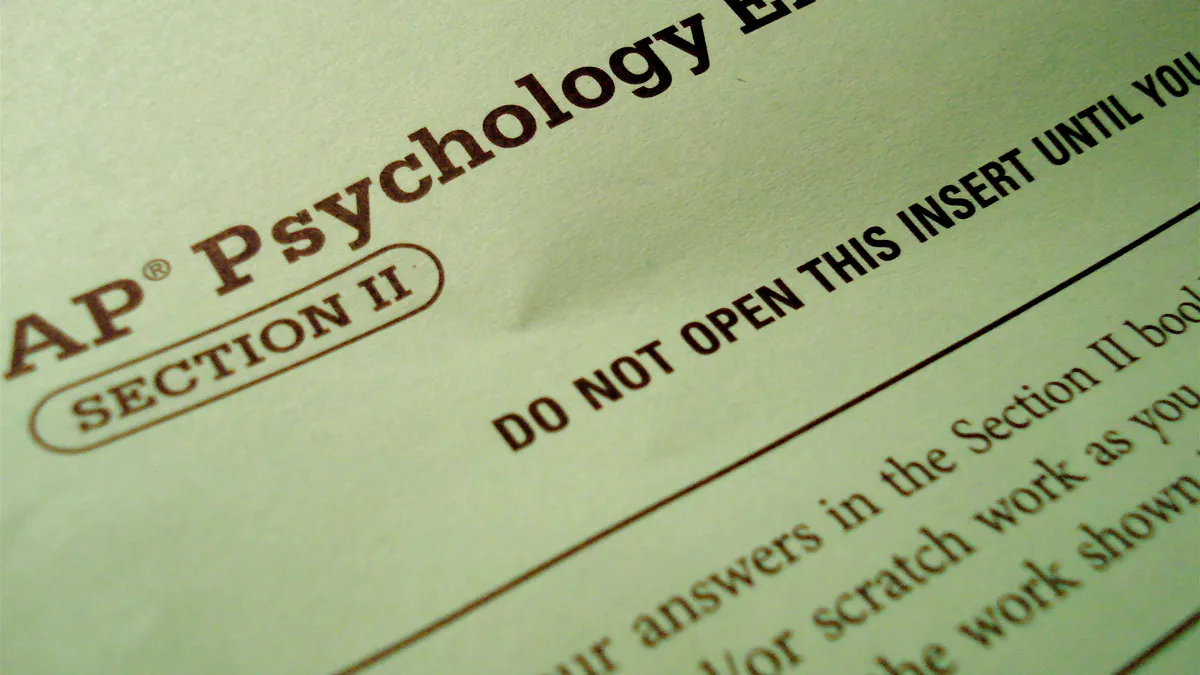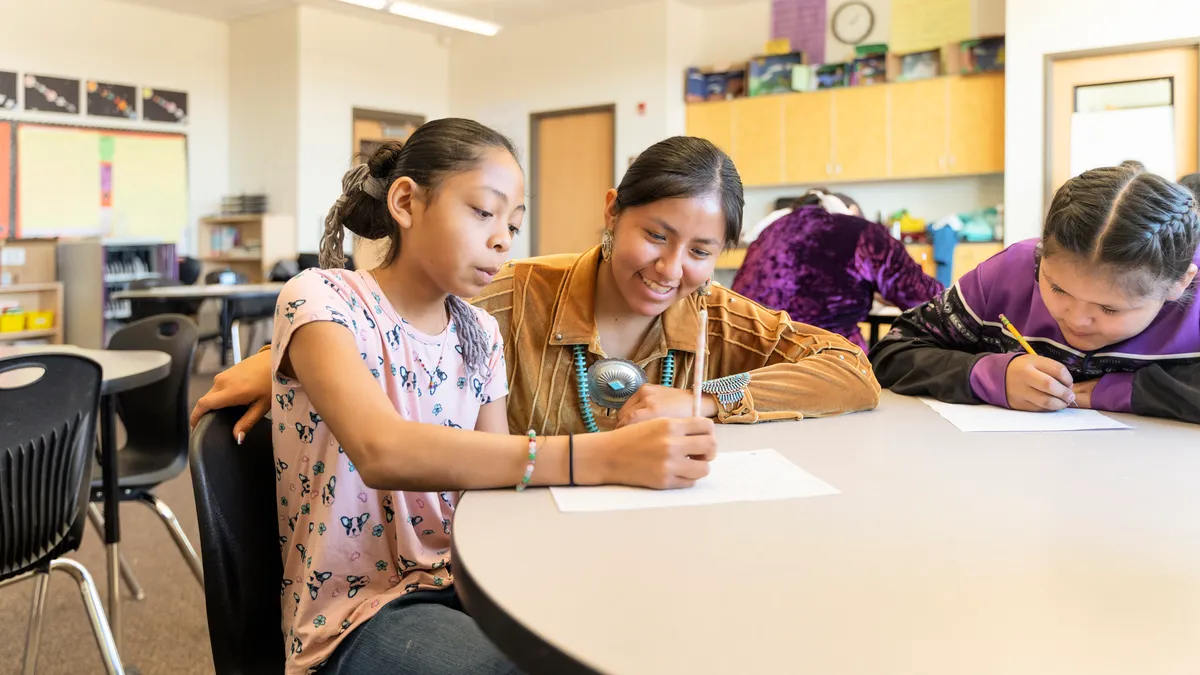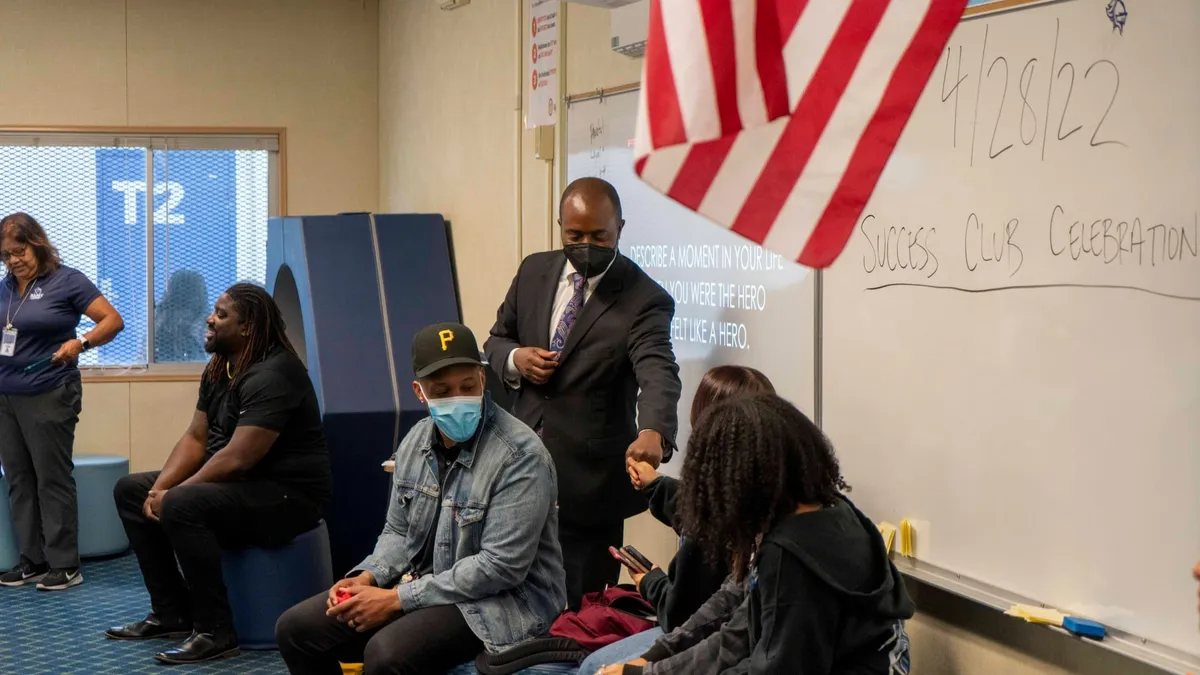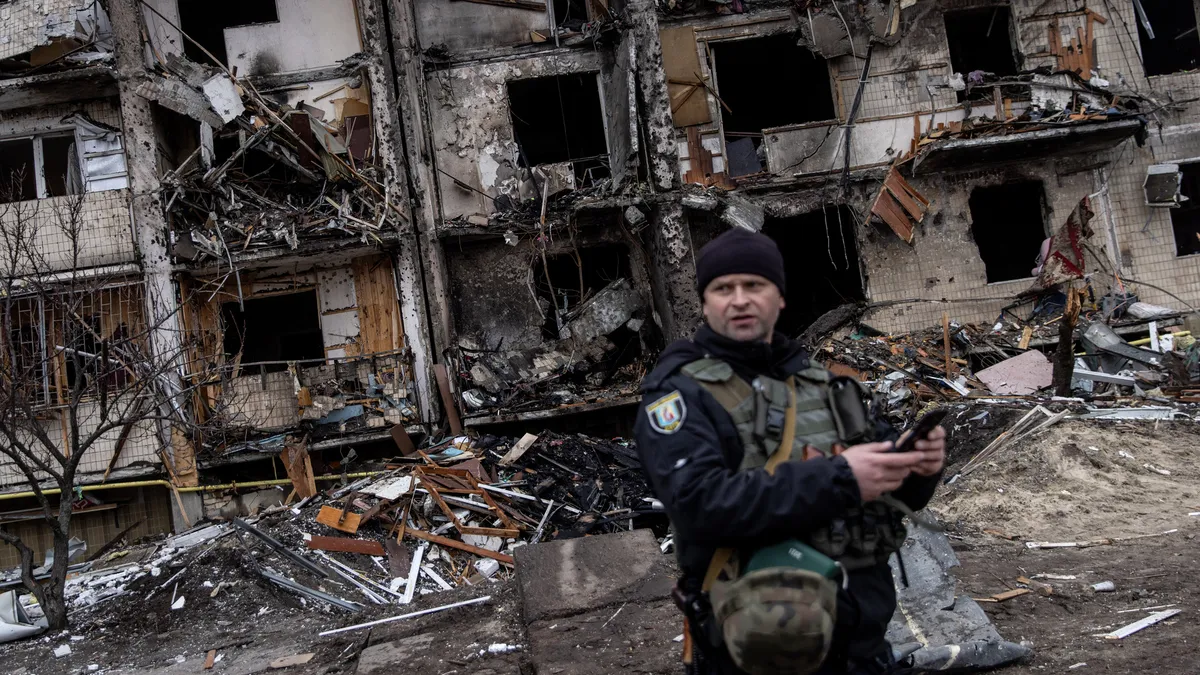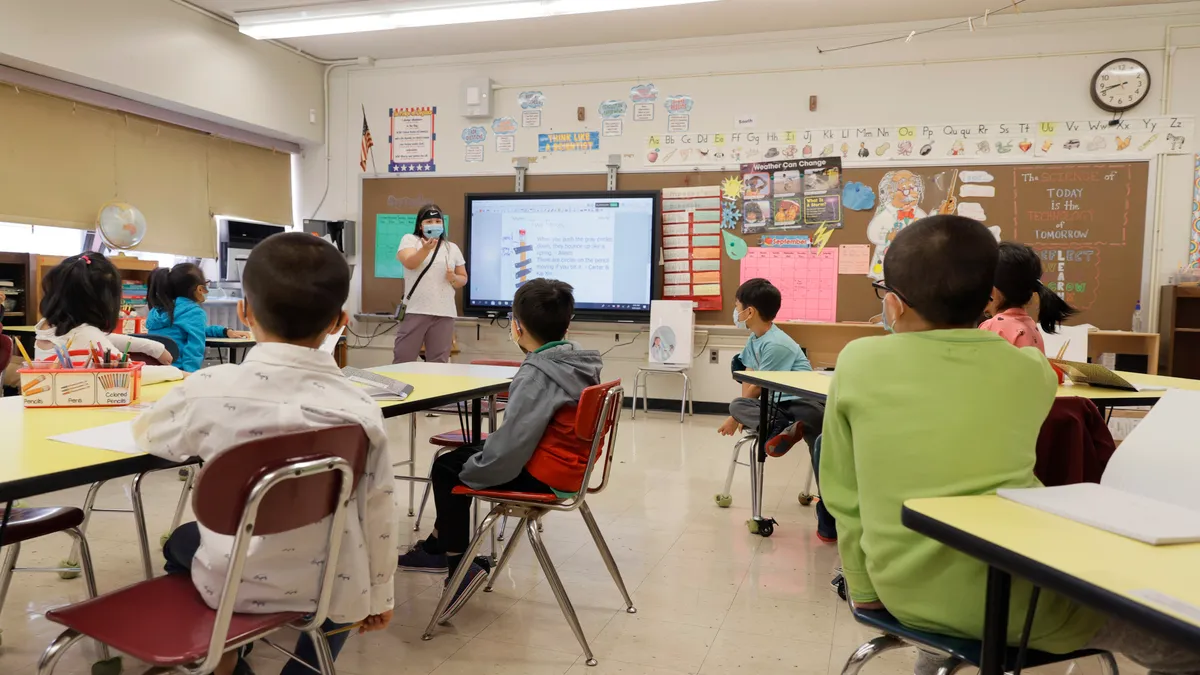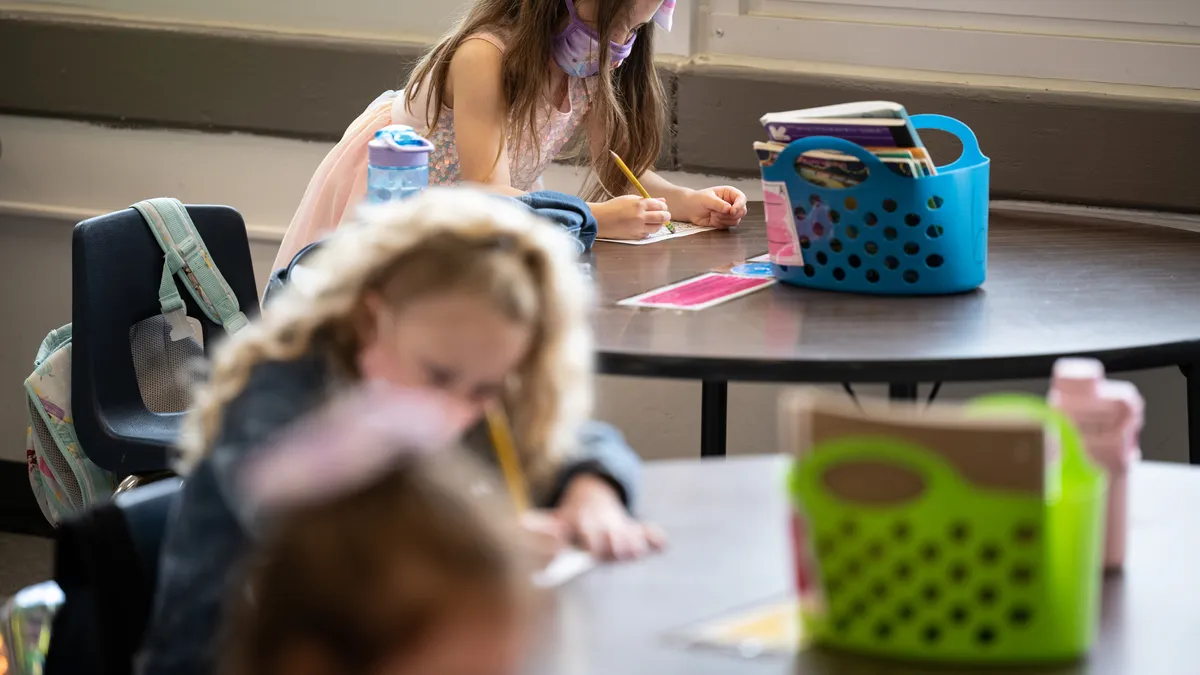Restorative practices and Positive Behavioral Interventions and Supports (PBIS) have been at the forefront of approaches aimed at decriminalizing misbehavior and disrupting the school-to-prison pipeline in recent years. During a Wednesday morning panel at the National Principals Conference in Chicago, two Indiana administrators addressed how they had tackled those very approaches in their own schools.
Over the course of an hour, Amber Schroering, an assistant principal (AP) at Brownsburg East Middle School (and the 2017 Indiana AP of the Year) joined Delaware Trail Elementary School Principal Chris Renner — both from the Brownsburg Community School Corporation in Indiana — to provide details on both philosophies for implementing more positive disciplinary approaches in schools.
Early on, Renner asked those present to consider their philosophies and core beliefs on student discipline. Many fall into one of two camps: "Students should be recognized and/or rewarded for following basic behavioral expectations," or "Students who get into trouble frequently lack the ability to make better choices."
Both, however, have to be set aside to consider a new paradigm.
Administrators must consider baggage students bring to school
Identity, in-school and online relationships, home life, abuse, what just happened on the bus, hormones, academic standing and a lack of resources are among the additional baggage students bring to school with them each day along with their supplies. As attendees named off each of these factors, he shook a can of soda and asked who’d be willing to open it. No one accepted. Many said they would let it “sit for a while.”
With the can serving as a metaphor for a student, he told them that they can’t possibly know what’s going to work without sitting down and talking to that student.
“I’m sure every single one of you have a soda can — that kid that you know, who you’ve worked with” who has trauma in their life that have needed help in order to get across the finish line, he said. Relationships are key in these situations.
Schroering shared the story of “Justin,” a student she had when she first became an AP about a decade ago. He cussed out teachers and was chronically disruptive. Justin ultimately didn’t make it through the school year, as she had to recommend expulsion that February. Additionally, she didn’t have a good relationship developed with Justin’s mom, who ended up taking him out of the district.
She said that story drives her thoughts on these issues, because she feels she didn’t do everything in her power in that scenario.
In all, 23 students were expelled from East Middle School that year. The staff, as a result, looked into Ross W. Greene's Collaborative Problem Solving (CPS) approach and PBIS.
In “Lost At School,” Greene, a clinical psychologist who researches ways to deal with behaviorally challenged students, expands upon CPS, which asks educators to identify skills students lack, as well as unmet expectations — or unsolved problems. It requires working directly with the student to decrease conflict and improve communication, encouraging empathy and collaboration to help them identify and move beyond their challenges.
Ultimately, it’s a process of shifting from a mindset of “kids do well if they wanna” to “kids do well if they can” and then figuring out what’s getting in their way.
You must assume that the student is already motivated, knows right from wrong, has been punished enough, and has lagging skills. It’s a perspective that embraces the notion that “kids with social, emotional and behavioral challenges lack important thinking skills.”
A tale of two schools
Brownsburg East Middle School has a student population of 1,072 students in grades 6-8. Demographically, they break down to:
- 72.8% white
- 14.5% black
- 23.9% free/reduced-price lunch
- 12.4% special education
- 1.4% limited English proficiency
As a result of high testing success, the school often gets lumped in with affluent schools. The school began implementing PBIS in the 2009-10 school year. Teachers explicitly taught behavior expectations, reinforced positive behaviors via a token economy system called “Dog Bucks,” increased accountability and monitoring of undesirable behavior, and reframed in-school suspension as a growth experience and out-of-school suspension only when needed to keep the student body safe.
The approach evolves according to student need, and in-school suspension is now focused on working with students through their challenges. The approach has decreased out-of-school suspensions and expulsions while enrollment, diversity and the percentage of students on free/reduced-price lunch increased. Expulsions dropped from 23 in 2009 to just two last year.
In 2009, the school was 38th in math and 18th in English language arts (ELA) on the annual state standardized assessment. In 2016 and 2017, it was first in math and first in ELA.
The speakers also discussed Chapel Hill 7th & 8th Grade Center in Indianapolis. The school has 1,171 students. Its demographic breakdown is:
- 44.5% black
- 25.4% white
- 22.8% Hispanic
- 71.7% free/reduced-price lunch
- 12.8% special education
The school adopted PBIS in 2014-15, aiming to improve school culture, build relationships in the school community (including among parents), develop the whole student, and engage and connect students to the school. The school worked with a nonprofit counseling center to provide on-site mental health services for students. If students are in crisis at school, this provides an option for them to get the help they need then and there.
Students participating in groups, such as Young Men of Purpose, GALS, Growing Giants, Robotics and Safe Sitter increased from 215 to over 490 between 2014-15 and 2016-17, ensuring that more students have something to plug into while at school.
The tiers of the PBIS triangle
Establishing relationships, maintaining them, and repairing them are the three pillars of the PBIS triangle.
“It’s not all rainbows and unicorns. We have to have consequences,” Schroering added.
Tier 1 is the foundation of the pyramid — the support for all students.
At this level, all students would participate in presentations from grade-level administrators, view videos on procedures, receive character education one day a week, learn about the behavioral matrix (hung throughout the school), learn about schoolwide classroom expectations and consequences, and participate in the token economy. At this stage, there are low-level consequences.
This tier uses intrinsic and extrinsic incentives to motivate 80% or more of students to meet expectations, building meaningful and culturally competent relationships to develop students and not punish them by criminalizing negative behavior. Student behaviors must, at the end of the day, be viewed through a social-emotional lens, the speakers said.
To build the infrastructures for this, they recommended starting with simple, focused, purposefully redundant and clearly communicated expectations built by a core group of educators.
Particularly important is that educators ask the misbehaving student to identify the harm their behavior caused and what steps they can take to correct things. It’s a collaborative process to arrive at a solution that benefits all involved, as reframing these negative experiences helps students explore their misbehavior, analyze the harm from it and grow.
Tier 2, meanwhile, should represent 20% or less of the school population. Students may be recommended for Tier 2 support if they fall into an “at-risk” category. Administrators must set clear criteria for Tier 2: five disciplinary referrals, two incidents resulting in suspension, three or four failing grades, or being on a trajectory to have 10 or more absences in a school year.
Support at this stage includes building a behavior tracking plan, using a team approach with all stakeholders, using Greene's CPS model and a “problem solving checklist,” and reframing to “turn wounds into wisdom.”
Ask students “What happened today?” when they have a misstep, Renner says, and they’ll give you valuable information.
“Just because you did this doesn’t mean you’re a terrible person or terrible kid,” Renner said. That action or energy channeled in the right context can be a powerful thing. Educators must direct students to identify and use their skills better.
“This shouldn’t be some long, nebulous process,” Renner says.
If it goes longer than 8-10 weeks, it's likely time to escalate to Tier 3. This stage should represent less than 5% of the school's total student population. There must be sufficient data to suggest progressing to Tier 3, like at least 20 days minimum of a repeated pattern of behavior with Tier 2 interventions being implemented. But significant safety issues, for example, merit escalating directly there.
Actions at this stage include a schoolwide management plan with a team approach now including psychologists, behavior consultants and special education staff members. The behavior tracking form becomes a starting point for a functional behavioral assessment and formal behavior intervention plan, with support staff to observe and problem solve.
Tier 3 also focuses on behavioral ABCs — antecedent, behavior and consequence. This requires a consideration of the function of students' behavior, whether it be for attention, task avoidance or some other reason, they said.
A success story
Schroering wrapped up with the story of another student, Jaylin, who went from 20+ discipline logs in 6th and 7th grade, but was down to four in 8th.
“Jaylin’s always been smart, that was never his issue,” Schroering says.
Prior to his turnaround, Jaylin was on the path to expulsion in 6th grade. If he had been expelled, he said in a video played for the crowd, he would have fallen into bad habits and not succeeded. Getting extra chances and having support and strong expectations put him on the path to believing in himself and having more self-control.
“I’m passionate about [this approach]," he said, "because I’ve seen it change lives.”


